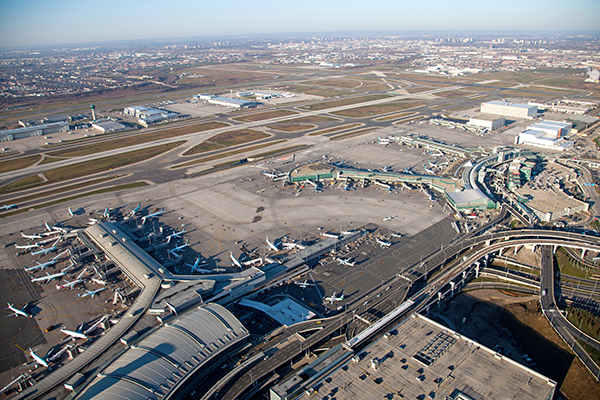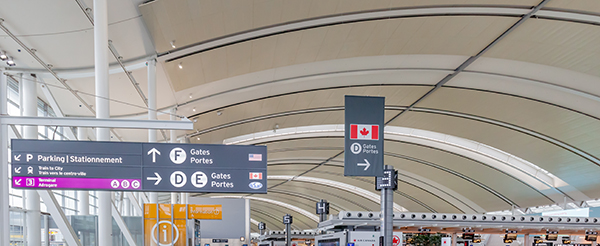What’s Taking So Long?

The latest government and industry actions; continued action to advance the rights of travellers; collaborating with partners to find solutions; increasing staffing for security screening; and ArriveCAN were all covered in a recent update on action and progress made on reducing traveller wait times and delays across Canadian airports were all covered in an update delivered this week by Transport Minister, Omar Alghabra; Health Minister, Jean-Yves Duclos; Public Safety Minister, Marco Mendicino; and Tourism Minister and Associate Minister of Finance, Randy Boissonnault.
The ministers made it clear that in Canada, airlines must follow the requirements of the Air Passenger Protection Regulations, which outline compensation requirements for passengers for flight disruptions due to incidents within an airline’s control, including crew shortages if the airline could have prevented the flight disruption with proper planning.
They noted that new regulations taking effect on Sept. 8, 2022, will also ensure that passengers are offered the option of a refund for flights that are cancelled, or where there is a lengthy delay due to reasons outside of an air carrier’s control. This includes major weather events or a pandemic, and instances where it is not possible for the air carrier to complete the passenger’s itinerary within a reasonable time frame.
The Canadian Transportation Agency (CTA) is the independent, quasi-judicial tribunal and economic regulator of Canada’s national transportation system with the powers of a superior court to enforce the rules and regulations under which airlines operate.
Additional resources of $11 million were provided through Budget 2022 to assist the CTA in carrying out its mandate to enforce these rules and help them to deal with passenger disputes.

The federal government is also strongly encouraging Canadians to know their rights when they travel by air under the Air Passenger Protection Regulations. The CTA developed an information resource to help passengers who are experiencing issues during their travel and advises them of their rights under the Air Passenger Protection Regulations.
In terms of collaborating with partners to find solutions, the Ministers noted the following:
- In recent weeks, Minister Alghabra has met with senior leadership of numerous airports and airlines of all sizes across the country to ensure ongoing collaboration and continued action to further reduce delays for travellers. Similar meetings continue to be scheduled.
- This week, Parliamentary Secretary to the Minister of Transport, Annie Koutrakis, met with the senior leadership of Saskatoon International Airport and Calgary International Airport to discuss the actions they are taking to ensure passengers are travelling smoothly.
- Transport Canada continues to meet regularly with airports and airlines alongside the Canadian Air Transport Security Authority (CATSA), the Public Health Agency of Canada (PHAC), the Canada Border Services Agency (CBSA), and NAV CANADA to find solutions and address congestion issues affecting travel.
As for increasing staffing for security screening, it was pointed out that:
- Since April,1,740 CATSA screening officers have been hired across Canada.
- Efforts to increase screening officer staff levels at all airports continue.
And in terms of streamlining customs processing at Toronto Pearson International Airport:
- To further facilitate entry and expedite traveller processing, there are now 12 eGates, 4 dedicated NEXUS eGates and 30 new primary inspection kiosks (PIKs) at Toronto Pearson International Airport.
As for ArriveCAN, it was noted that:
- Over 1.4 million travellers successfully used the ArriveCAN app last week.
- Travellers arriving at Toronto-Pearson, Vancouver or Montréal-Trudeau international airports can now save additional time by using the optional Advance CBSA Declaration feature in ArriveCAN to submit their customs and immigration declaration in advance of arrival.
- Early usage data indicates that using the optional Advance CBSA Declaration cuts the amount of time a traveller spends at a kiosk by roughly one third. In the week ending Aug. 14, the advance CBSA declaration was submitted by 34 percent of arriving passengers at these three airports.
- In the coming weeks, this feature will become available to travellers arriving at the Calgary, Edmonton, Winnipeg, Billy Bishop Toronto City, Ottawa, Québec City and Halifax international airports.
Good to know:
Flight completions
- For the week of Aug. 15-21, 2022, 98% of flights planned for Canada’s top four airports were completed (i.e., not cancelled), an improvement from 95% for the first week of July.
- This is the same as the week of Aug. 19-25, 2019, when 98% of flights planned for the top four airports were completed.
On-time performance
- From Aug. 15-21, 2022, over 86% of flights from the top four airports left on time, or within one hour of their scheduled departure.
- This is a significant improvement from under 75% for the first week of July and is approaching the pre-pandemic levels in August 2019 where 92% of flights were on time, or within an hour of scheduled departure.
Holding of aircraft at Toronto Pearson International Airport
- The number of arriving international flights being held on the tarmac at Toronto-Pearson International Airport has decreased dramatically since May.
- For the week of Aug. 15-21, 2022, only 2%, or 47 international flight arrivals were held on the tarmac, as compared to the peak of 373 during the first week of May.
Passenger security screening wait times
- From Aug. 15-21, 2022, 85% of passengers at the four largest airports were screened within 15 minutes by CATSA, an improvement from 79% during the first week of July 2022.
- Toronto-Pearson International Airport: 81% (96% in 2019)
- Vancouver International Airport: 86% (approaching pre-pandemic levels of 88% in 2019)
- Montréal-Trudeau International Airport: 94% (approaching pre-pandemic levels of 98% in 2019)
- Calgary International Airport: 87% (same as pre-pandemic levels in 2019)


